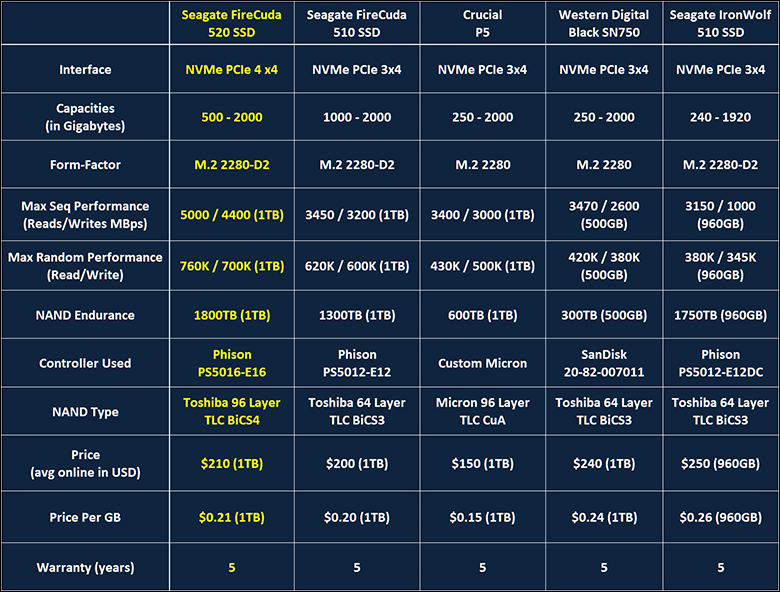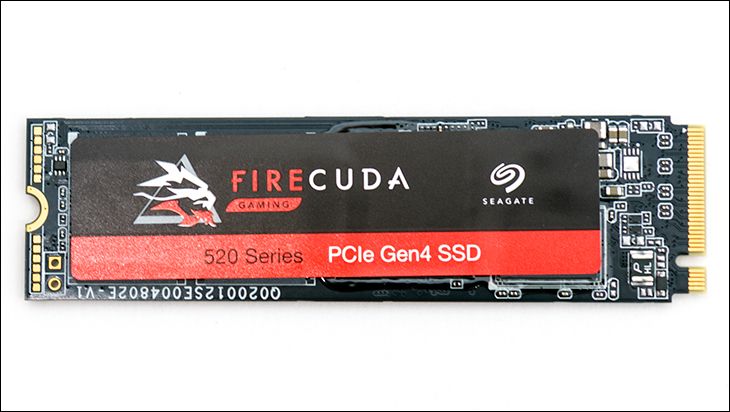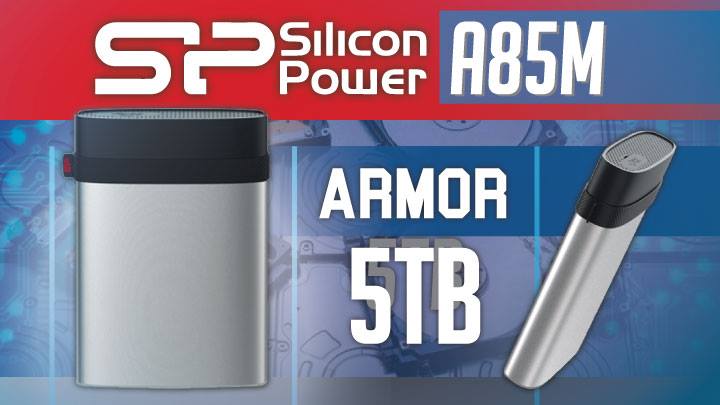With its combination of performance, value, and warranty the (now) last generation Seagate FireCuda 510 was one of our favorites. It really was (and still is) a great ‘everyman’ model. One that showed that Seagate was capable of keeping up with the competition and not arrogantly assuming that past performance would translate into future gains in the mainstream consumer market. It however was not ground breaking as it combined a good (Seagate branded Phison E12) four lane PCIe 3.0 NVMe controller with known good NAND (Toshiba/Kioxia) BiCS 3 NAND. With the refreshed FireCuda 520 series Seagate intends to not only build upon their past success but give enthusiasts and mainstream buyers a really good reason to opt for it over one of the various competitors’ models.

To do this Seagate is not trying to reinvent the wheel nor mess with a winning formula. Instead, they have taken their previous design philosophy and updated it for the next generation. This means a firm foundation built upon value and durability… but inherently exciting for the enthusiast. The first and certainly nothing to sneeze at is the change from older BiCS 3 to newer BiCS 4 TLC NAND. As we went over in the IronWolf 125 series review, this means Toggle Mode 3.0 NAND that is not only gentler at p/e cycles (aka erasures) but also faster than the older Toggle Mode 2.0 NAND it supersedes.
This however is actually the least exciting of the updates Seagate has baked in. BiCS 5 is not only on the roadmap, but has been announced as coming to the market “Any Day Now™”. Thus, enthusiasts will not be overly impressed… even if it is impressive NAND in its own right. Instead, mainstream consumers will like that the FireCuda 520 can offer more. More performance and even more (theoretical) overall value. Instead, what will be exciting to enthusiasts is the controller. By swapping out their own controller for a Phison E16 this one change also increases the theatrical bandwidth of the drive itself… and let’s face it few actually care about the hows or whys… they only care about results.
This is because the E16 is a four-lane PCIe 4.0 controller which offers access to a PCIe 4.0 bus. Doubling the busses bandwidth does not automagically mean doubling of performance… but it does indicate the possibility is indeed there. Mix in the fact that enthusiasts have mostly gone for AMD’s ThreadRipper (3000-series) or “mini-me ThreadRipper” (aka latest gen Ryzen 7/9) and want to take full advantage of its PCIe 4 abilities and well… you have a match made in heaven. That however, is the theory and sometimes reality is a wee bit different. So, let’s stick this bad boy in our ThreadRipper 3960X beast and see what it can – and cannot – do.











